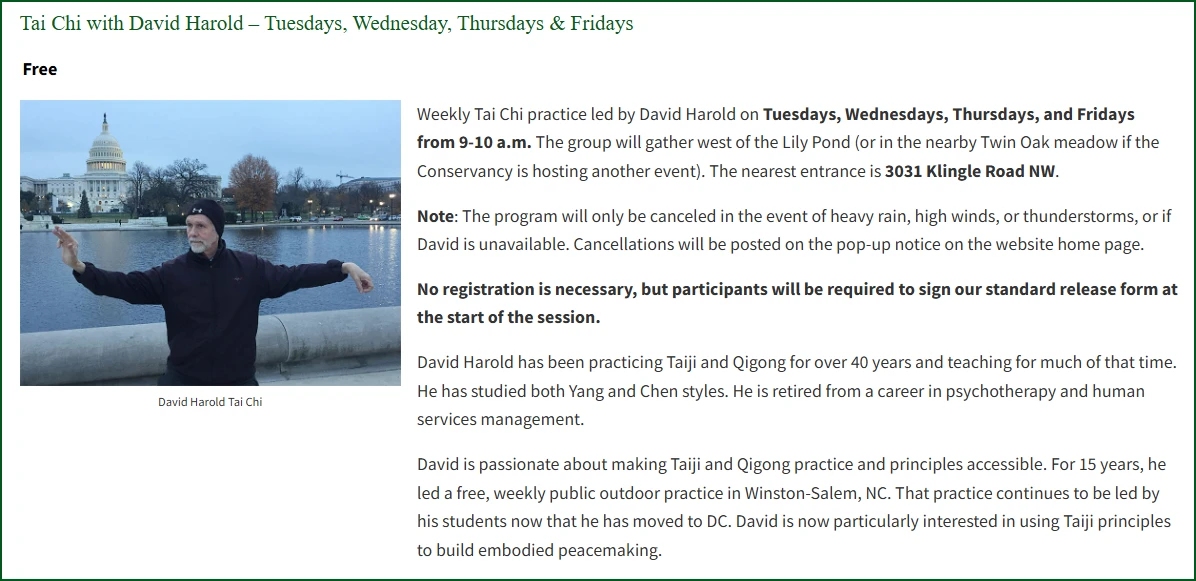At the Beginning….
The Tregaron Conservancy began work in 2006 after the landscape had suffered from more than 50 years of neglect:
- The entire landscape had been overtaken by invasive and damaging vines, shrubs and weeds.
- Many trees had died and fallen throughout the property, blocking all of the trails.
- The Lily Pond was completely filled with sludge and debris.
- The Macomb Stream was not flowing clearly and the Klingle Stream was clogged and backed up.
- Decades-old rhododendrons no longer flowered due to lack of sunlight.
- Stone stairways, bridges and walls were damaged and covered with dirt, silt and vines.
The woodland looked more like a jungle and the water features were eyesores. The meadows had been overtaken by encroaching invasive plants. The paths were largely unusable. The iconic 250 year-old Twin Oak tree was dead and dangerous.
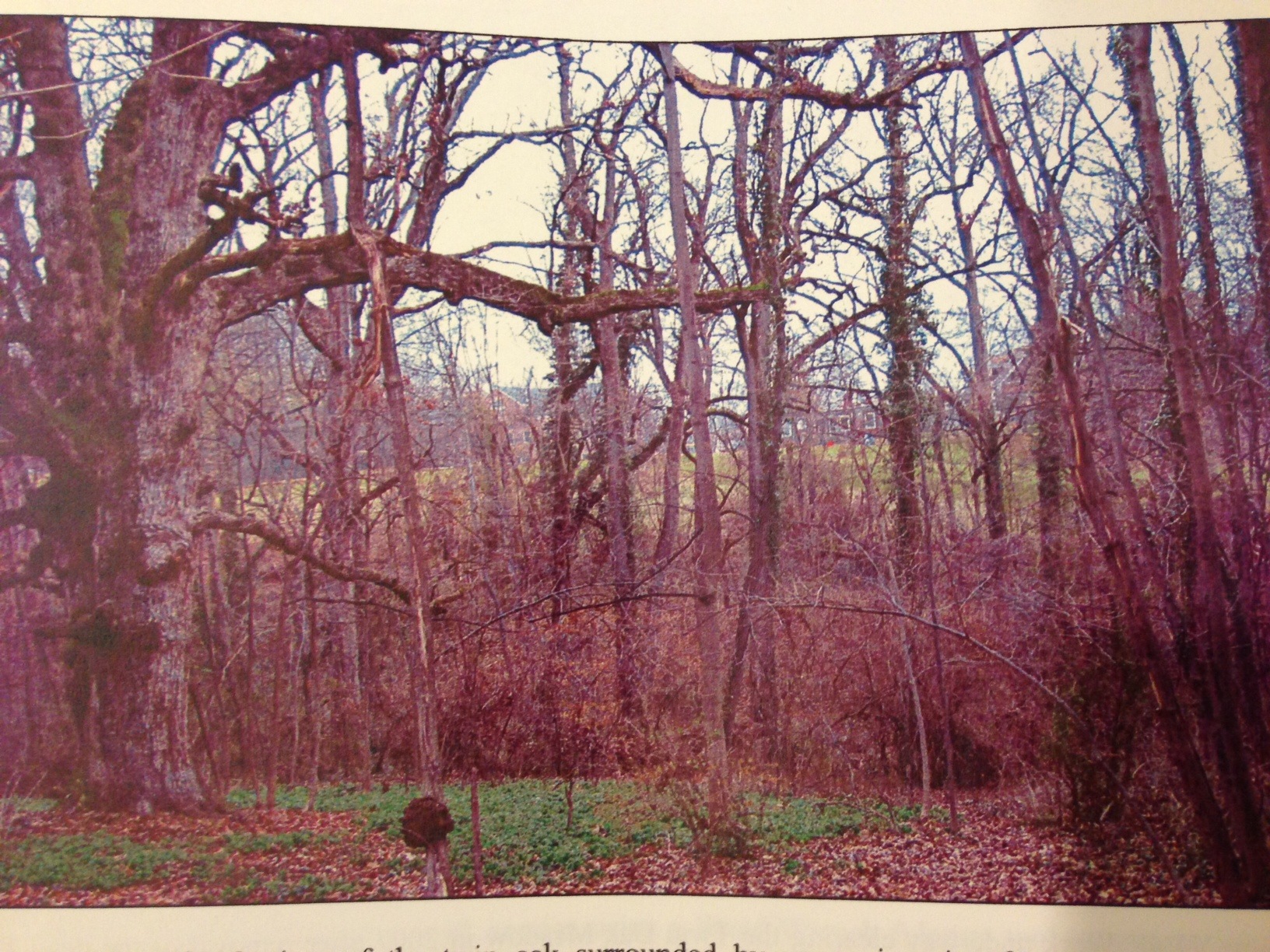


(Bonnie LePard, Mia & the Twin Oak)
With the goal of rehabilitating the land to the original Platt/Shipman design, as well as restoring its plant community and animal habitat, the Conservancy got to work: clearing invasive growth, removing dead trees, restoring paths, clearing stream beds, uncovering stone stairs and bridges, and reconstructing the Lily Pond. In performing all of its landscape work, the Conservancy is guided by Tregaron’s Cultural Landscape Report and consults with the District of Columbia Historic Preservation Office and other landscape design and preservation experts and partners.
The Conservancy’s First Decade, 2006-2016
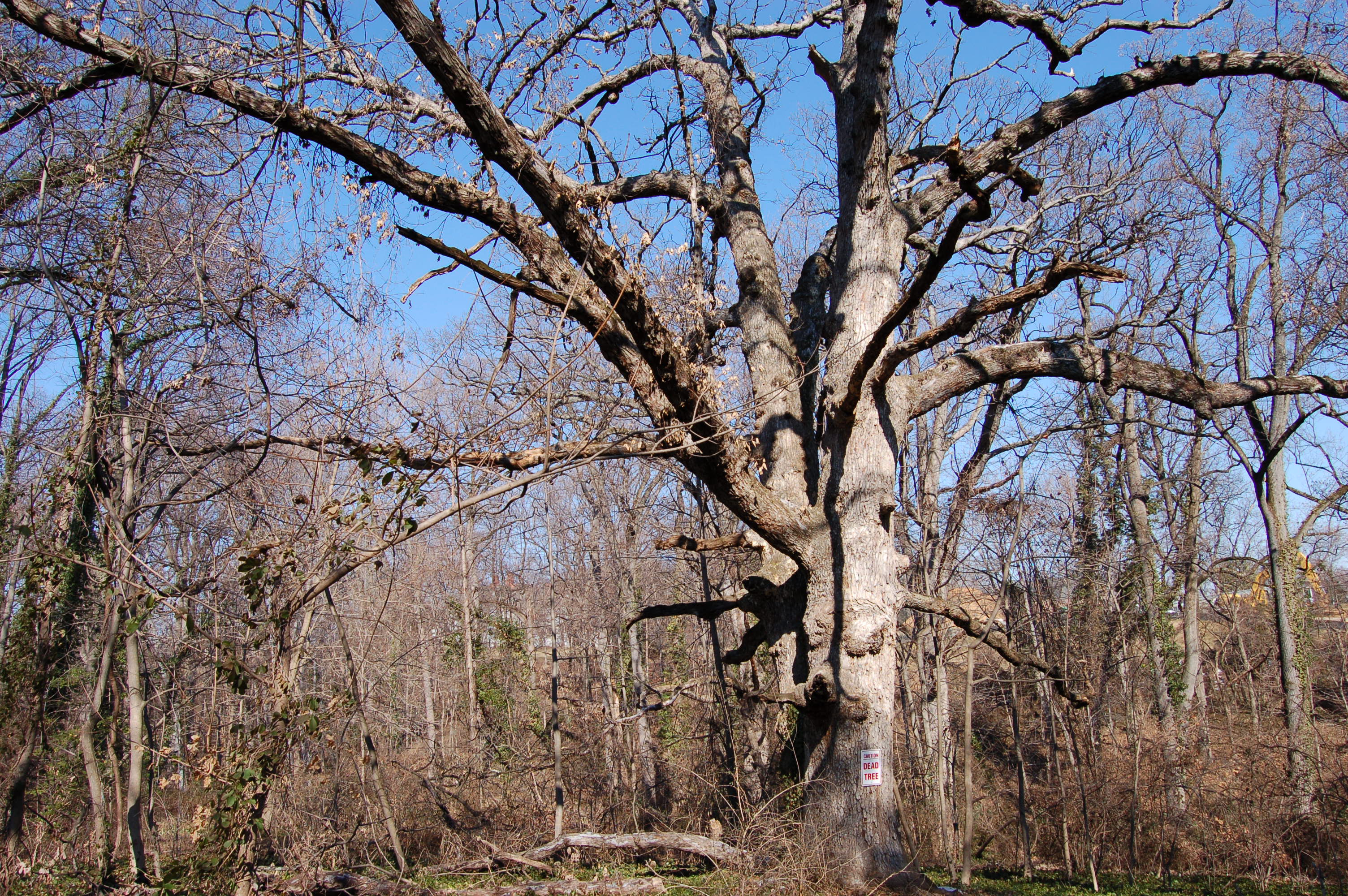

Assessing the Task at Hand and Clearing Trees
Beginning in 2006, the Conservancy engaged landscape architects and designers to develop plans and oversee the initial rehabilitation of the historic landscape.
Guided by experienced arborists, the Conservancy hired The Care of Trees to remove dozens of large fallen trees, take out invasive smaller trees and clear the land of the poison ivy.

Restoring Trails and Streams, Enhancing Our Plant Community
The Conservancy next began to re-establish the extensive system of Platt/Shipman-era trails and footpaths that wind through the Estate. Once the initial obstacles were removed and the main trails were reopened, we invited the community to help on volunteer clean-up days. Neighbors and friends from across the city (and beyond) helped us begin to reverse the damage that decades of neglect had caused. We removed hanging branches and invasives along the trails and fields. We unclogged both streams; they are now healthy and flowing correctly.
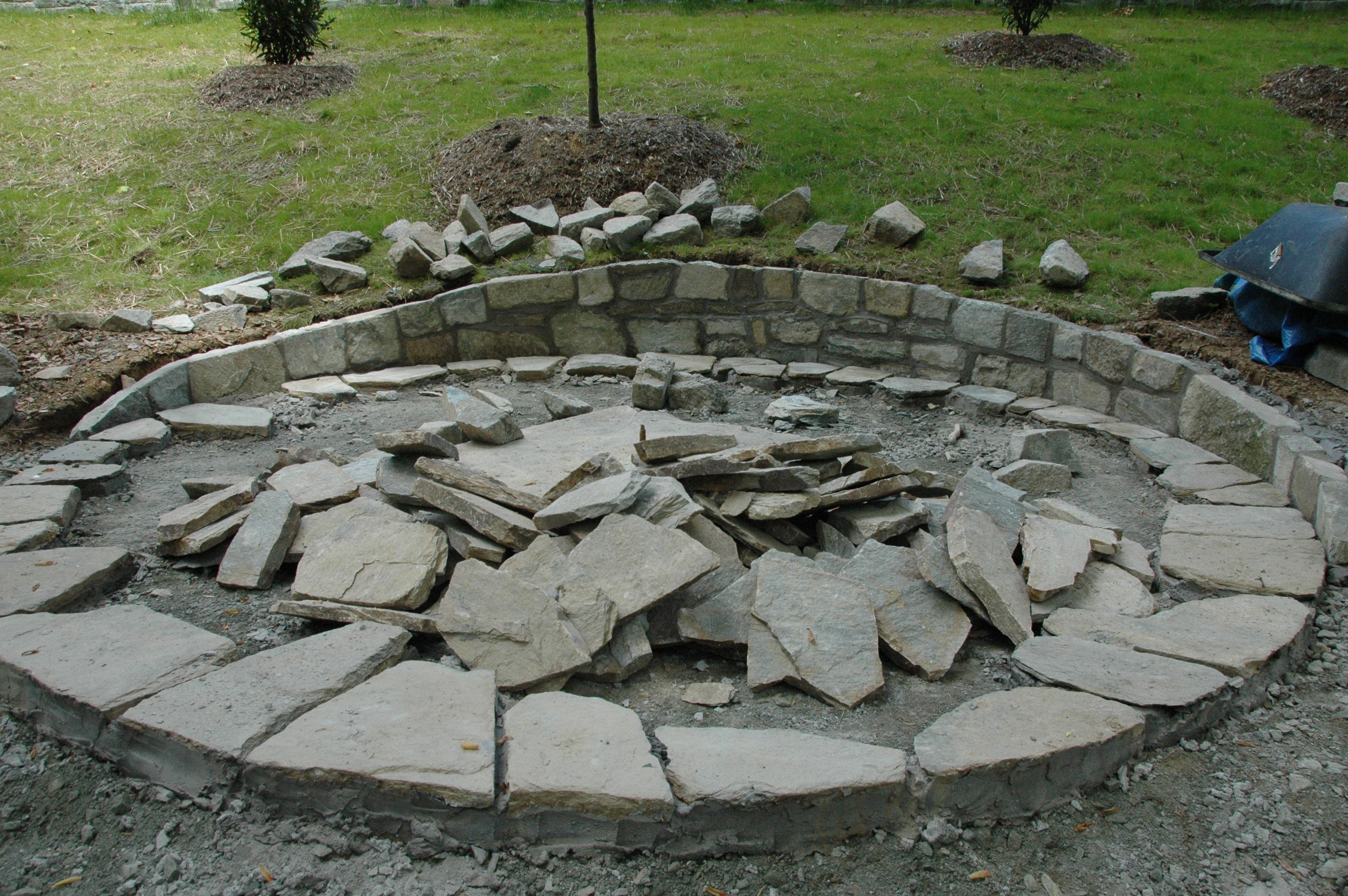
Excavating and Restoring Historic Features:
In addition to removing hazardous trees and assessing tree health, we performed major excavation work to uncover original stone bridges, stairs, walls and other features dating back to 1912-1915. The Conservancy discovered an original stone staircase and marble patio (photo on left) that were then removed, due to construction of the School’s new soccer field, and relocated to a site above the west side of the Lily Pond. Our work was guided by an archeologist from DC’s Historic Planning Office and Shipman’s original 1915 plans.
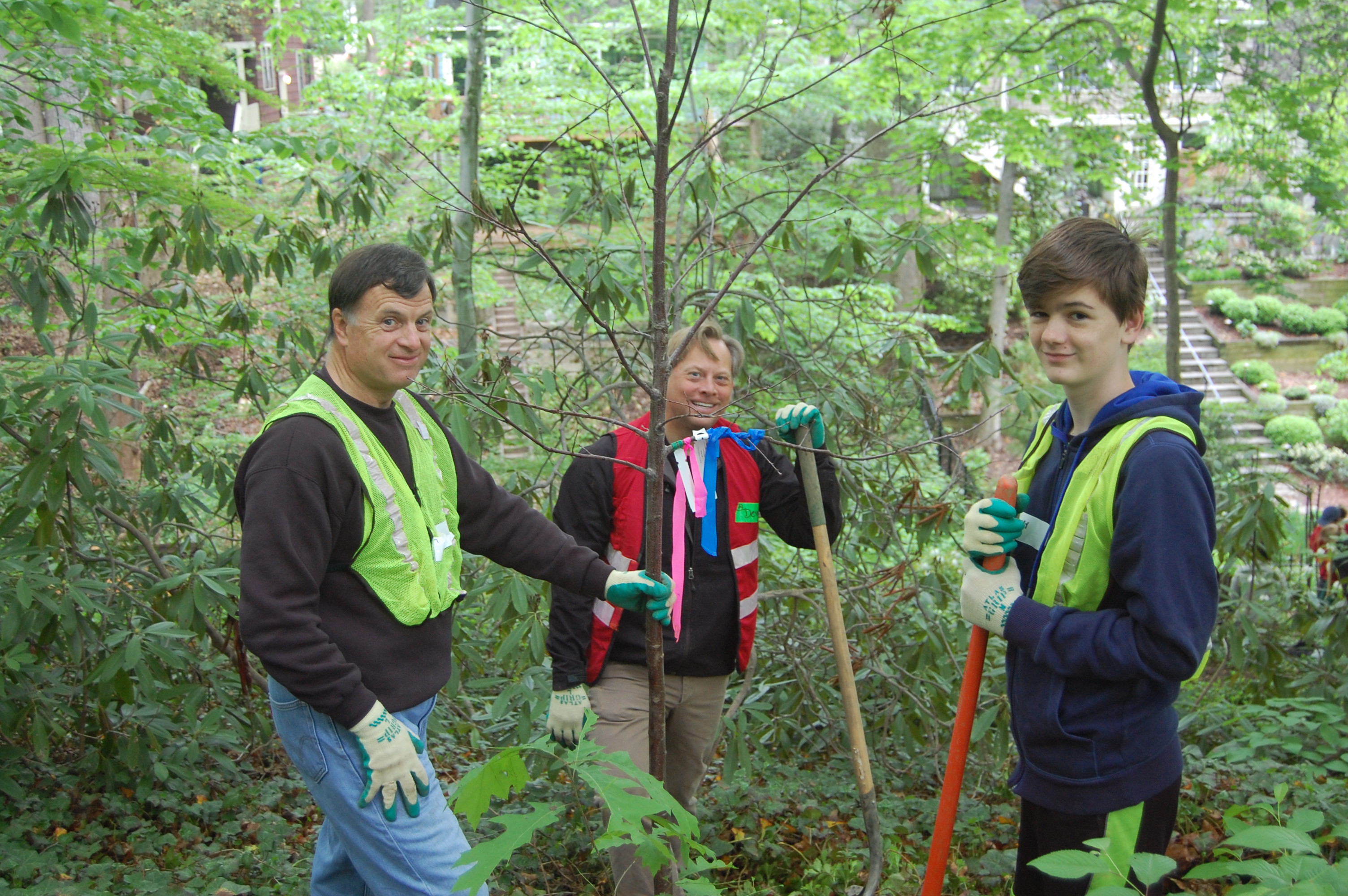
Planting Trees, Assessing Tree Health
Next, with guidance from our arborists and in partnership with Casey Trees, skilled volunteers planted over 100 trees in the Klingle Stream valley around the Lily Pond and throughout the woodlands. The Care of Trees mapped our major trees; you will see small markers on many of them. We have held many tree planting events over the years, restoring both the canopy and understory with native and other site-appropriate trees. To date, thanks in large part to Casey Trees volunteers and tree donations, we have planted over 250 trees.
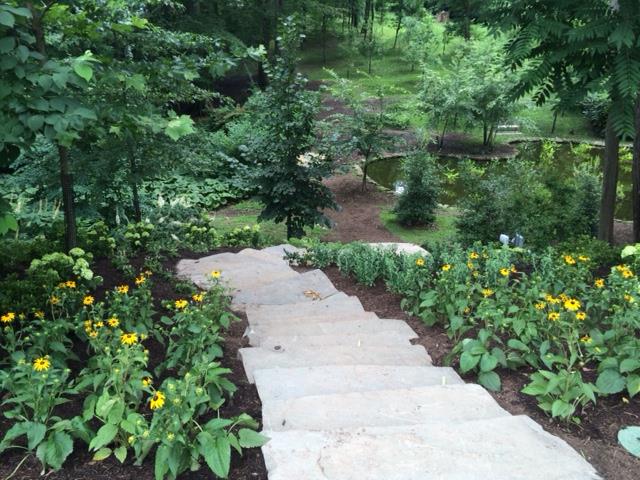
Planting Wild Gardens
We have commissioned landscape plans that aim to recapture Shipman’s “wild garden” aesthetic and plant palette, with an emphasis on native, deer- and drought-resistant selections. Initially, we focused on the pond valley, designing and planting gardens along the pond overlook stairways, and our entrances. More recently, Landscape Chair Tamara Belt of Hawthorne Garden Design and volunteer landscape designer Ann Brooke have led our efforts to establish new wild gardens along the Bridle Path, woodland paths and fields. Our volunteers and professional landscape crew have planted hundreds of shrubs, ferns, flowers and ground-cover plants.
Beginning in 2016, working with plans from nationally renowned meadow designer Larry Weaner, we seeded the first native grasses and sedges for our new native meadows. Volunteers have planted over 2,000 native wildflowers. Each year, our volunteers also plant hundreds of daffodils along our streams and hillsides.

Making Tregaron More Welcoming
We are also engaged in ongoing efforts to make visiting Tregaron more inviting and enjoyable by restoring original paths and adding new entrance signs, trail signs, and maps. In 2014, we moved our Klingle Street entrance to a more historically appropriate location. Landscape Chair Tamara Belt designed a new gate with handsome stone pillars and a staircase for the entrance. More recently, we added a handrail to improve access. We have also performed some initial landscape work at our Macomb Street entrance, with more work to come. We removed unattractive chain-link fencing and twisted, rusty iron fence sections throughout the landscape and added historically-appropriate fencing along some of our boundaries. More work remains to be done on our boundary fencing, and our trail and entryway signs.
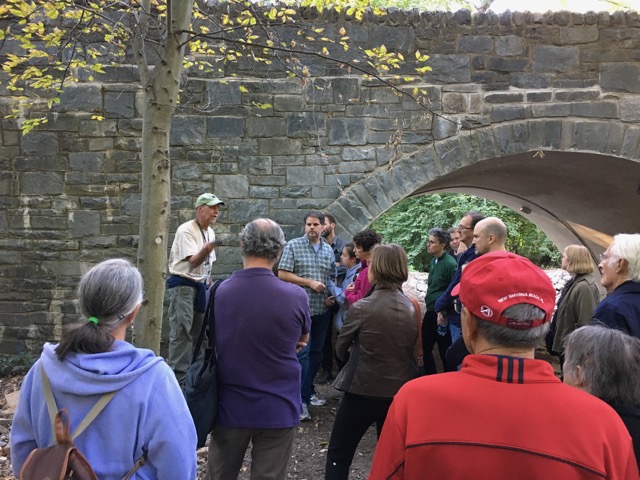
Co-Stewarding the Estate with the Washington International School
Over the years, we have worked in tandem with WIS on a number of major landscape projects, as well as coordinating on ongoing stewardship. Recent project work by WIS (performed in consultation with the Conservancy) included the installation of Shipman-inspired landscaping and a new, historically appropriate stone stairway bordering the south lawn of the mansion (the “East and West Groves”), and extensive repair, repointing and drainage work on Platt’s iconic 1912 Causeway. The original cobble gutter approaching the bridge was re-created as part of this project and a new drainage system was constructed. The arch under the Causeway bridge — once cracking, rust-stained and covered in graffiti — is now magnificently restored.

Ongoing Management and Maintenance
Stewardship of the landscape is complex and time-consuming. Climate change is making this work more even more costly and demanding. We supervise and perform this work according to an annual landscape maintenance calendar. Thanks to our terrific maintenance crew from One Yard at Time Landscaping and a dedicated group of gardening volunteers, paths are cleared and mulched, trash, storm debris and weeds are removed, the lily pond and gardens are maintained, branches are pruned, and trees and plants are inspected for health issues. The irrigation system and pond bubbler are also maintained.
While there is much work remaining to be done to rehabilitate the landscape, today Tregaron is a lovely place to walk, run, picnic and enjoy nature. The trails and woodlands offer something new with each season. Benches have been added to allow for rest and reflection. Dog walkers and children love our open fields all year round. We are grateful for the tremendous philanthropy and volunteer assistance that has made all of our work possible.
Read Tregaron’s Cultural Landscape Report
Note that each Part is a pdf download; some files are quite large
Part 1 – Cultural Landscape Report
Part 2 – Cultural Landscape Report
The Cultural Landscape Reports’ Landscape Plans and Photo Sheets:
Part 1 — Platt-Shipman Sketch Plans
Part 2 — Platt-Shipman era vintage photographs with location notations
Part 3 — 1948 aerial photographs with landscape units
Part 4 — Davies Era vintage photographs
Part 5 — 1980 WIS-TLP aerial photographs, 2000 aerial photographs, 2005 aerial photographs
Part 6 — 2005 photographs with location notations
Part 7 — 2005 drawings of existing conditions and features, 2007 Project Areas Plan
Part 8 — Vegetation Management Plan, Illustrations
Part 9 — Illustrations
Our Rehabilitation Work Continues: Current Projects
While we have made major strides in renewing the landscape, we have urgent needs, and a great deal remains to be done. English ivy, Japanese knotweed and other invasives continue to threaten and damage our woodlands. We have removed huge stands of bamboo, but more remains to be removed. Portions of our trails are severely threatened by erosion and storm-water drainage is a constant engineering challenge. Anachronistic concrete walls are crumbling and damaging trees. Gardens must be planted and renewed. In short, we are still a long way from recapturing Shipman’s vision and rehabilitating the land for 21st century enjoyment.
The Conservancy is hard at work on a number of current projects to address some of these challenges and further enhance the landscape. To accomplish this daunting (but exciting) task, we need your help!
Find out how you can get involved.


